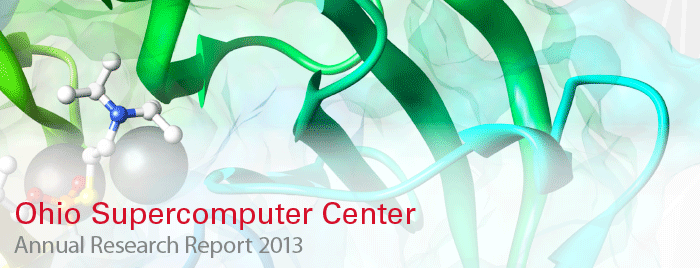Anastasios Ioannides at the University of Cincinnati leveraged Ohio Supercomputer Center resources and ABAQUS software to render simulations of cracking concrete slabs.
Most American highways are constructed as a Portland cement concrete (PCC) slabs that are poured and finished on a layered roadbed. Such pavement structures are subjected to millions of applications of traffic wheel-loads, as well as numerous cycles of temperature and moisture variations, and eventually succumb to cracking.
Both analytical and numerical techniques have been developed using engineering mechanics for establishing usable predictions of slab responses under typical operating conditions. Nonetheless, most pavement design guides available to engineers today also rely heavily on statistical/empirical algorithms, in order to relate pavement responses to distresses or cracks.
“Such hybrid approaches employ the so-called Miner’s cumulative damage hypothesis and have been found produce unrealistic pavement performance predictions, because they decouple the responses and the distresses,” said Anastasios Ioannides, Ph.D., associate professor of civil engineering at the University of Cincinnati (UC). “Such limitations can be addressed by venturing beyond the elastic limit of material behavior and developing a rational failure criterion that obeys instead the principles of fracture mechanics.”
Ioannides is using Ohio Supercomputer Center systems and a general-purpose finite element package, ABAQUS, to model crack propagation in concrete pavement slabs equipped with aggregate interlock and dowel bar load-transferring mechanisms and subjected to temperature and wheel loads. Traction separation-based cohesive elements are inserted along the crack plane to simulate the fracture process.
Parameters known to influence both pre-crack and post-crack responses are considered, including joint stiffness, joint opening, aggregate size, dowel-concrete interaction and dowel spacing. To ascertain the validity of results from the proposed finite element discretization, calculated responses are compared with data from previous experimental and numerical studies.
“This investigation is a continuation of the step-by-step development and application of fracture mechanics tools in pavement engineering initiated at UC in the late 1990s and relying on the Fictitious Crack Model,” Ioannides said. “I hope that a contribution will be made to the on-going effort for more mechanistic pavement design to obviate the need for the purely statistical transfer functions resulting from applications of Miner’s hypothesis.”
Efforts of the UC research team were boosted significantly by the 2005 release of ABAQUS Version 6.5, which for the first time included “a family of cohesive elements for modeling deformation and damage in finite-thickness adhesive layers between bonded parts.”
Project Lead: Anastasios Ioannides, University of Cincinnati
Research Title: Three dimensional finite element simulation of crack propagation in jointed concrete pavements subjected to temperature and wheel loads
Funding Source: Army Research Office
Website: http://sas.ceas.uc.edu/facultyandStaff/profiles/Anastasios_Ioannides.html

